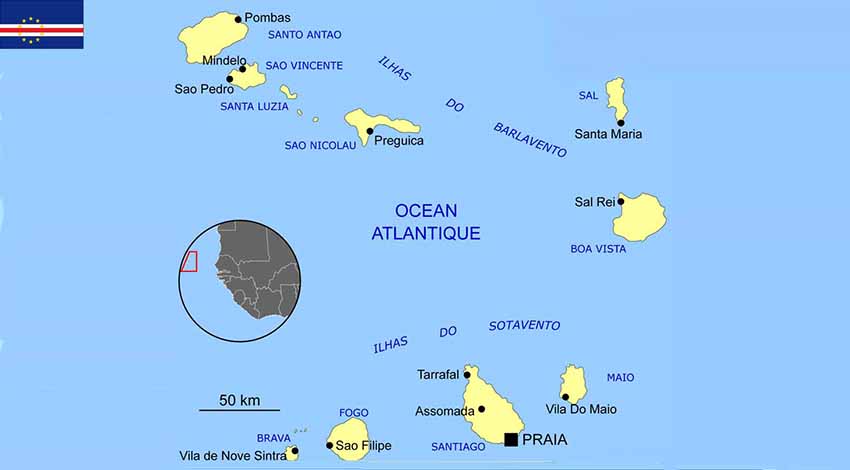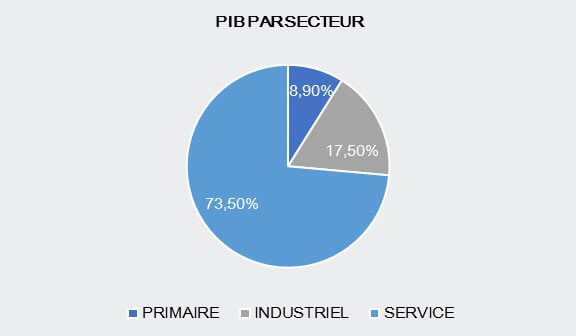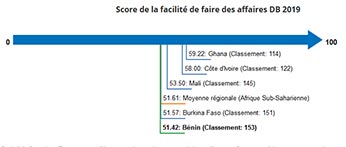
1.1 Geographic and politics characteristics of Cape Verde
Political system
The uninhabited islands were discovered and colonized by the Portuguese in the 15th century; Cape Verde subsequently became a trading center for African slaves and later an important coaling and resupply stop for whaling and transatlantic shipping. The fusing of European and various African cultural traditions is reflected in Cape Verde’s Crioulo language, music, and pano textiles. Following independence in 1975, and a tentative interest in unification with Guinea-Bissau, a one-party system was established and maintained until multi-party elections were held in 1990.
President directly elected by absolute majority popular vote in 2 rounds if needed for a 5-year term (eligible for a second term); election last held on 2 October 2016 (next to be held in 2021); Prime minister nominated by the National Assembly and appointed by the president.
- Area : 4.033 km2
- Population : 568.373 (July 2018)
- Density : 141 people/km2
- Population growth rate : 1.32%
- Urban population : 65.7% (2018)
- Official language : Portuguese
International agreements
Cabo Verde is part of ECOWAS and the West African Monetary Zone with Liberia, The Gambia, Ghana, Guinea Conakry, Nigeria and Sierra Leone.
1.2 Macroecononic Framework
1.3 Economic performance and outlook of Cape Verde
1.4 Ease of Doing Business
- Benin (capital : Porto-Novo)
- Burkina Faso (capital : Ouagadougou)
- Cape Verde (capital : Praia)
- Ivory Cost (capital : Abidjan)
- Gambia (capital : Banjul)
- Ghana (capital : Accra)
- Guinea (capital : Conakry)
- Guinea Bissau (capital : Bissau)
- Liberia (capital : Monrovia)
- Mali (capital : Bamako)
- Niger (capital : Niamey)
- Nigeria (capital : Abuja)
- Senegal (capital : Dakar)
- Sierra Leone (capital : Freetown)
- Togo (capital : Lomé)




